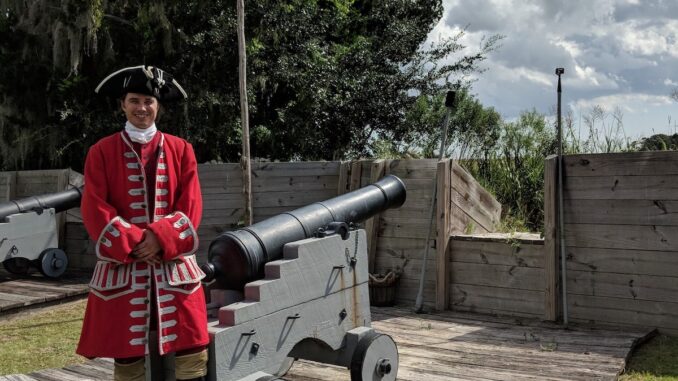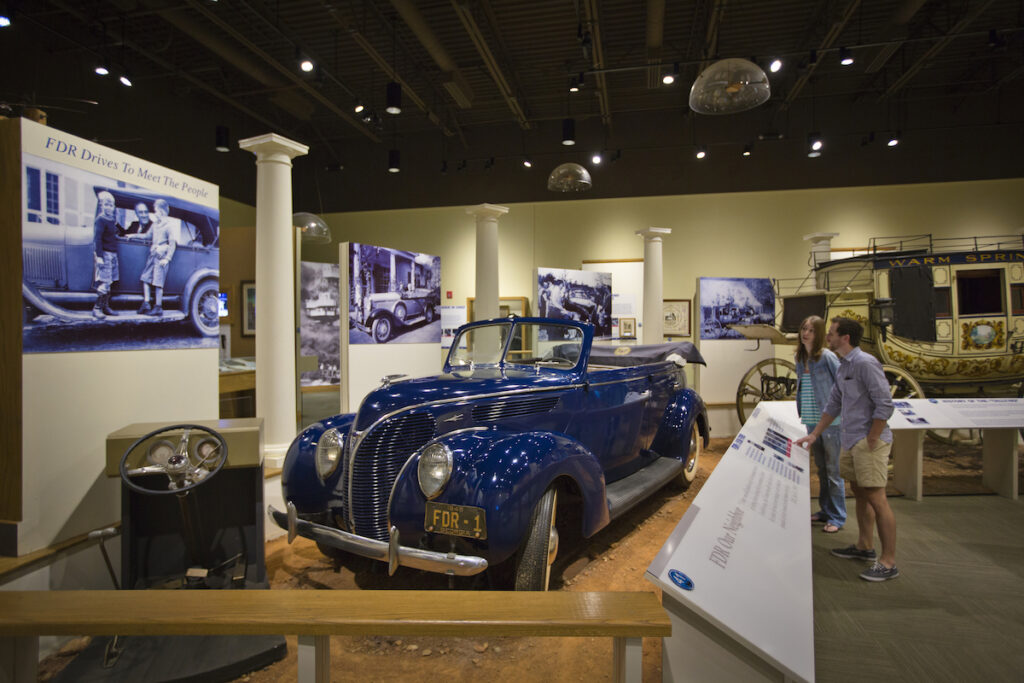
ATLANTA — As part of the Georgia History Festival’s statewide celebration of “Super Museum Sunday,” State Historic Sites are offering free admission on Sunday, Feb. 11.
Visitors can participate in activities such as Gullah Geechee ring shouting, translate the Cherokee Nation’s first newspaper, admire FDR’s hand-controlled roadster, and walk in the footsteps of Revolutionary War, and Civil War soldiers.

Revolutionary War & Colonial Georgia
- Fort King George State Historic Site, Darien: From 1721 until 1736, this fort was the southern outpost of the British Empire in North America. Climb into the reconstructed cypress blockhouse, explore the palisaded earthen fort and tabby ruins, tour the museum and hike a short nature trail.
- Fort Morris State Historic Site, Midway: This earthen fort on the Medway River protected Georgia against the British in both the Revolutionary War and the War of 1812. A museum describes the colonial port of Sunbury; a nature trail and picnic sites are available.
- Wormsloe State Historic Site, Savannah: A breathtaking avenue lined with Live Oaks leads to the tabby ruins of this colonial estate. A museum houses artifacts excavated at Wormsloe and a film about the founding of the 13th colony. Guests can rent bikes to explore the famed oak avenue.
Native Americans
- Chief Vann House State Historic Site, Chatsworth: Called the “Showplace of the Cherokee Nation,” this brick mansion was built by Chief James Vann in 1804. Decorated with beautiful carvings and natural hues, the home features a cantilevered stairway and fine antiques.
- Etowah Indian Mounds State Historic Site, Cartersville: These mounds were home to several thousand people more than 400 years ago. Walk to the top of the tallest mound and imagine citizens lives between 1000–1500 A.D.
- Kolomoki Mounds State Park, Blakely: Seven mounds built during the 12th and 13th centuries by Swift Creek and Weeden Island Indians are protected at this southwest Georgia historic site. Visitors can camp overnight by a fishing lake.
- New Echota State Historic Site, Calhoun: New Echota was the Cherokee capital from 1825 until 1838 when the Cherokee were uprooted from their land and removed westward during the Trail of Tears. Today, visitors can walk a nature trail and tour the Supreme Courthouse, the Council House, Vann’s Tavern and print shop.
Gold Rush
- Dahlonega Gold Museum State Historic Site, Dahlonega: This museum sits right in the heart of Dahlonega’s square, in the former Lumpkin County Courthouse. It tells the story of how our nation’s gold rush began in Georgia and ultimately led to the Trail of Tears.

Historic Homes
- Hardman Farm State Historic Site, Sautee-Nacoochee: Built in 1870 by Captain James Nichols, this house is a grand example of Italianate architecture. Best recognized by its gazebo-topped Indian mound and cow pasture, this is a favorite Sautee-Nacoochee landmark in north Georgia. This site is normally closed during February but will be open for Super Museum Sunday.
- Roosevelt’s Little White House State Historic Site, Warm Springs: F.D. Roosevelt built this house in 1932 so he could seek therapy in the nearby warm springs used by polio patients. Visitors will see the famous “unfinished portrait” which he was posing for when he passed away, a film with historic footage and Roosevelt’s 1938 Ford roadster.
- Traveler’s Rest State Historic Site, Toccoa: This 1833 plantation home was expanded to accommodate the growing number of travelers passing through northeast Georgia in the mid-1800s. Most furnishings are original antiques.
- Hofwyl-Broadfield Plantation State Historic Site, Brunswick: This 19th-century rice plantation built by enslaved laborers is set among live oaks near the Altamaha River. Tour the antebellum home furnished with antiques and the museum showcasing fine silver.
- Jarrell Plantation State Historic Site, Juliette: This middle Georgia plantation features 20 buildings dating from 1847 to 1945, including a three-story barn, smokehouse, cane press, cotton gin, blacksmith shop, saw mill and syrup mill.
Civil War
- A.H. Stephens State Park, Crawfordville: Liberty Hall, the 1875 home of the Confederate Vice President, is fully furnished and open for tours. A museum houses one of the finest collections of Civil War artifacts in Georgia.
- Fort McAllister State Park, Richmond Hill: Nestled among giant live oaks, this is the best-preserved earthwork fortification of the Confederacy and the end of General Sherman’s March to the Sea.
- Pickett’s Mill Battlefield State Historic Site, Dallas: Pickett’s Mill is one of the best preserved Civil War battlefields in the nation, highlighted with a museum, earthworks and wooded trails. The 1864 battle was one of the few Confederate victories during Gen. Sherman’s Georgia campaign.
- Magnolia Springs State Park, Millen: During the Civil War, this site was called Camp Lawton and served as “the world’s largest prison.” Today, little remains of the prison stockade; however, the earthen breastworks which guarded it may still be seen. The park’s Camp Lawton Museum tells this gripping story.
For more information, visit GaStateParks.org/SuperMuseumSunday.




